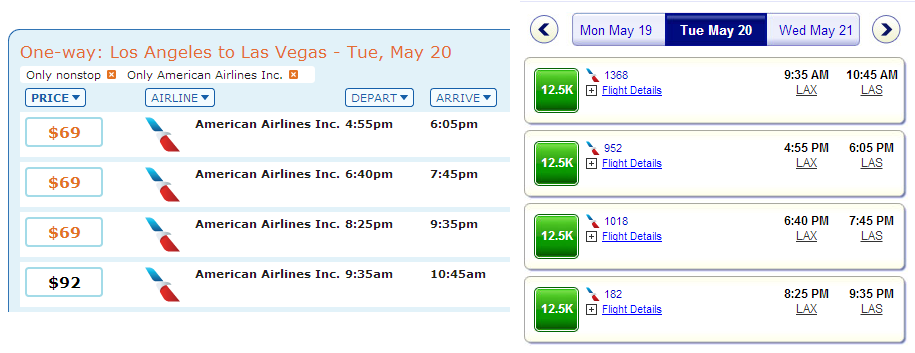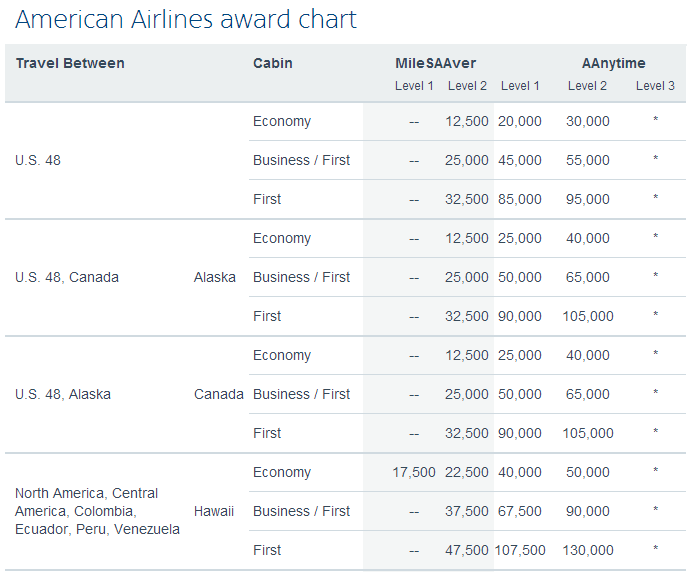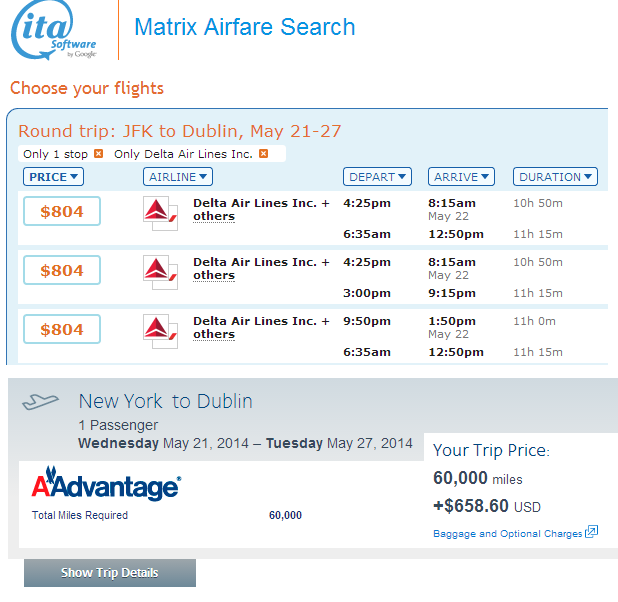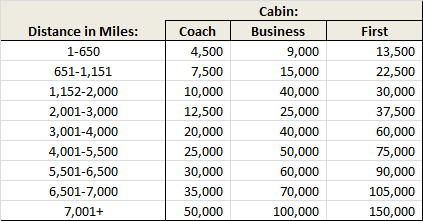Last week we introduced some of you to Milenomics, and what makes it different. We also discussed the basics of earning miles for different levels of travelers.
- Earning Miles
- Spending Miles
- Partners
- Routes
- Booking Tips & Tricks
- Be Your Own Elite
Today we’ll continue our introduction with a discussion of the other half of the coin: Spending Miles on Award Flights.
Earn & Spend, not Earn & Hold
All too often we know how to earn miles, but when it comes time to spend them we’re lost. One thing you should keep in mind at all times is that the airlines will not always give you correct information. Twice here on Milenomics I’ve covered situations where incorrect advise and an incorrect numbers of miles and money were spent, or were nearly spent due to bad information from the airlines. There really isn’t anyone keeping an eye on the airlines, and I’m sure countless numbers of Frequent Flyers call to use their miles and are overcharged every day.
There was an episode of I Love Lucy where Ricky and the band were going to travel through Europe. Unfortunately there wasn’t enough money for Lucy and Ethel to come along. In order to travel to Europe Lucy and Ethel decided to sell tickets and raffle a television for a fictitious charity, the “Ladies Overseas Aid.” The plan was to sell all the tickets, and pocket the money. There was no concern with how much the Television cost, or with how many tickets were sold because the whole thing was a scam.
In the end a policeman came along and reminded Lucy and Ethel that if they were selling raffle tickets with the intention of keeping the money they were committing fraud, and could be thrown in jail.
When we spend our time and money earning miles, but never spend them we’re in effect letting the Airlines off the hook for the Awards they’ve promised us. We’re letting them sell us the raffle tickets and pocket the prize money. The only way to combat this is to use as many miles (and as little cash) as possible to travel.
Two Types of Miles: Variable Value and Fixed Value
Let’s first cover the two different types of miles:
Fixed Value Miles
Variable Value Miles
Fixed Value Miles are miles which have a specific, fixed value attached to them. Southwest Rapid Reward Points are good examples of fixed value miles. Each and every Southwest “mile” is worth about 1.4 cents towards Wanna-Get-Away fares. This means very cheap flights cost very few miles, and very expensive flights can cost quite a lot of miles. Using Fixed Value miles is usually pretty easy–you search for flights on the airline’s site and choose to pay for your ticket with miles rather than money.
One thing to keep in mind when using Fixed Value Miles is that you almost always have to pay for the entire ticket with miles, or cash. If you have 9,000 Southwest Points and the flight costs 12,000 you cannot pay for 1/4 of the flight with cash and the other 3/4 with your points.
Variable Value Miles work differently, and just like their name implies they can have wildly different values from one booking to the next. Traditional Frequent flyer progams such as American Airlines (AA), United Airlines (UA), US Airways (US), and Delta (DL) all fall into this category. It is possible to book an award with Variable Value miles where each mile is only worth half a penny, and also possible to use the same miles for a booking worth 7 cents or more per mile.
The remainder of this post will deal exclusively with Variable Value Miles, and will simply refer to them as miles.
Spending Variable Value Miles (the Basics):
The best advice I can give you for buying tickets with miles is this: Forget nearly everything you know about buying airfare. Spending miles to buy tickets is almost always an entirely different, and much more complicated method of buying airfares. As an example look at this flight:

Certain miles will work very poorly (or not at all) for certain flights. The above example highlights an area where AA miles are not very useful; short cheap flights are almost always a poor use of AA miles. This is just one of many reasons we need to focus on the Conservation of Miles.
How Much is That Award Ticket? (In the Window…)
Without a fixed value to each mile the way we know how many miles a flight will cost is by looking up the award chart for the mileage program you have miles with. A Sample award chart for American Airlines can be found here. The chart is split into zones/countries and then into categories of awards, Saver/Anytime:

An award chart is something like a pricing guide. Any available seats to/from the pairs of countries/zones in the chart will be priced at the amounts given. Saver, sometimes called “Low-level” awards are the lowest priced, and most limited in selection of award seats. These are the prices often published by airlines in marking materials. Just because a zone and a price exist on an award chart doesn’t mean saver level award seats will be available.
Airlines balance a multitude of different factors when deciding how many award seats to release at the low level (saver) and higher levels. For certain routes they are incredibly stingy with low level awards. Also, once booked any seats you currently see available may not be replaced with more seats. Low level award seats can and do sell out.
Note:Some airlines publish different award charts for flights on their own metal, and for flights on partner/alliance members. We’ll cover this more in part 3 of this guide when we discuss Partners.
What Award Tickets Cost: Miles and Money
Knowing how many miles an award costs is only half of the true cost of award tickets. In addition to the above miles you’ll always pay something in cash for an award ticket. The best award tickets charge you just the miles, plus $2.50 in September 11th security fees per segment. Some programs (AA, US and UA) Will add a $75 fee if you book an award flight less than 21 days from departure. We attempt to avoid fees whenever possible here at Milenomics. As you continue to read here you’ll realize ways to do just that.
For #201 and aboves: When you start to travel outside of the U.S. fees can add up quickly. There are fees for US Customs, foreign customs, sometimes there are exit fees, or entrance fees added as well. These fees are unavoidable, but pale in comparison to the worst two letters you can ever see on an award ticket: “YQ” which stand for fuel surcharges.
Fuel surcharges are added to award tickets by some programs and some carriers. Knowing who charges fuel surcharges on award tickets can make a huge difference in the cash portion of your award ticket. Take for example a round trip flight from JFK to Dublin, Ireland (DUB). Below is a comparison of a flight booked with cash and one booked with AA Miles. AA adds fuel surcharges on some flights to Europe:

All is not lost if Europe is your goal and AA miles your currency, but you’ll need to be Savvy and aware that not every flight is a good value. Removing these high priced, YQ heavy flights also removes a large number of low level awards–which further hurts your ability to find seats to book with your AA miles.This is why a good amount of diversity in your mileage programs is important, as is knowing your demand for miles.
Exceptions: ANA and BA–Distance Based
There are two programs which work very differently from mainstream carriers here in the US. Those two programs are the British Airways Executive Club, and ANA Mileage Club. We’ve discussed both extensively here on Milenomics, and I’ll only cover them briefly here.
These two programs’ miles are still variable value miles. The different between each of them and a mainstream US carrier is that instead of publishing an award chart they simply publish award distances. Any flight which falls into those distances pays that amount of miles and any applicable amount of money. For BA Avios the award chart is:

Contrary to how standard zone based award charts fall apart in short distances (like the LAX-LAS example above), distance based programs excel in short-medium range flights. In fact the same exact AA Flights from LAX-LAS which cost 12,500 AA Miles can be booked with 4,500 Avios ($.0138 per mile). We’ll get more into how that works in part 3 of this series.
Wrap Up
The purpose of earning miles is to spend them. For miles that do not have a fixed value you can’t automatically assume all miles are correct for all routes. Practice bookings can help–as well as always comparing the cash price of a ticket to the Miles and Money price of an award ticket.
For any questions or comments reach out to me on Facebook, Twitter, or via email.






Thank you. I really enjoy your blog, it is informative, attractive, and well edited. A somewhat rare combination. This is the blog I send my mother to when I’m trying to explain things to her.
Booking awards is a complex subject, and it can be overwhelming to try to learn all the nuance of the various programs.
Haley, Thanks! 😉 I’m aiming to give a realistic picture of what it means to earn and use miles…warts and all. I really appreciate the feedback.
Booking awards is overly complex. But the way to get around it is simple – earn a ton of miles/points cheaply. Then there’s less worry about spending miles/points at optimal value. If you have lots of points in flexible programs like MR/UR/SPG, your options are much better and your stress at finding available seats is much lower.
As such, I disagree with the notion of earn and burn – sounds great in theory, but with constant devaluations, I prefer to have healthy balances in many programs to have maximum flexibility.
For example, a year ago you could find lots of premium space on Cathay booking with AA/AS miles at attractive award cost. However, if you planned to have just enough miles this year for premium seats, and then went to book today, you’d find much of that space had vanished and you’d probably be out of luck. However, if you had a healthy MR balance, you could have transferred to AsiaMiles and booked those seats (at much higher points cost – but if they are low/negative net cost, so what? You’d never be want to pay for those seats using Flexperks or Arrival points as you’d have to spend ungodly amounts to cover the cash cost of the tickets) To me, the flexibility to book seats I want, when I want, vastly outweighs maximizing the value I could theoretically obtain IF I could find availability using “optimal” award programs.
As such, those who claim (like this author) that you should only earn what you “plan” to spend is unrealistic advice and likely to lead to disappointment.
On an upcoming trip to Australia/New Zealand I discovered AA miles can be used at 10K OW in these two countries. So, we are going to leave Adelaide to travel to Queensown, NZ. We will end up paying 9K each since I have an AA credit card and we have to overnight for 23 hrs in SYD…
Jonnie: Good use of those AA Miles. I wish they had similar rates inside the US as they do within some South American, African, and Australian areas, but sadly they don’t 🙁